There has been a trend of gaming notebooks becoming smaller and thinner with every generational release of new GPUs and processors. MSI, in previous years, has been notorious in giving the best gaming experience to its users by giving its notebooks top-end specifications at a trade-off: weight. This is most apparent in their Titan Pro series like the MSI GT75VR 7RF Titan Pro.
MSI have jumped on the bandwagon of increasingly lighter gaming notebooks with the GS65 Stealth Thin. The problem with the GS65, however, is its cost. With a starting price of USD 2,099 or PhP 134,995, not everyone can afford MSI’s definition of the ultimate gaming experience while still being light weight.
MSI has a solution for those who does not have a cool hundred thousand to drop on a light gaming notebook: the MSI GF63. In this review, we are going to take a look at MSI’s latest attempt to bring down the lightweight gaming experience to a more agreeable price.
MSI GF63 8RD
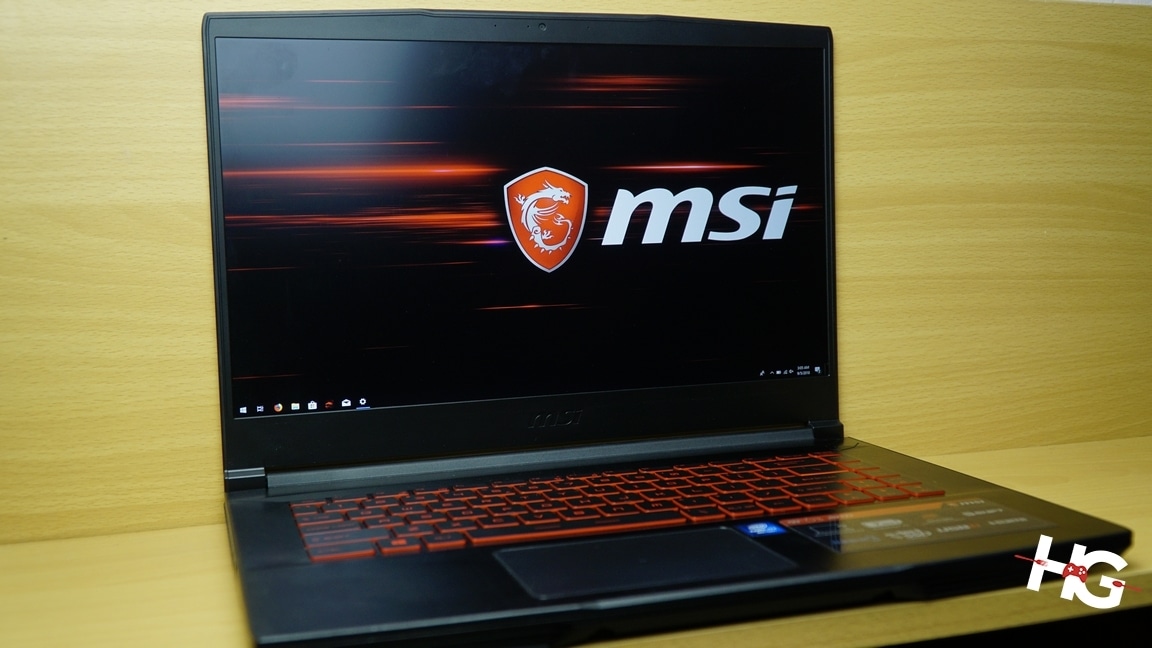
| CPU | Up to 8th Generation Intel Core i7 Coffee Lake Processor |
| OS | Windows 10 Home |
| GPU | Up to NVIDIA GeForce GTX 1050 Ti |
| RAM | Up to 32GB DDR4 2400 / 2600, 2x SODIMM |
| Display | 15.6-inch IPS |
| Storage | 1x M.2 (NVMe/SATA) |
| 1x 2.5-inch SATA HDD | |
| I/O Ports | 3x USB 3.1 Gen1 Type-A |
| 1x USB 3.1 Gen1 Type-C | |
| HDMI | |
| RJ-45 | |
| 1x microphone-in | |
| 1x headphone out | |
| Audio | 2x 2W speakers |
| Connection | Gigabit LAN |
| 802.11ac WiFi | |
| Bluetooth 5.0 | |
| Weight | 1.86kg |
| Dimensions | 359 x 254 x 21.7mm |
| Battery | 3-cell, Li-Polymer, 51Whr |
| Others | Single-color Backlight Keyboard, 120W Adapter |
Up close with the MSI GF63 8RD
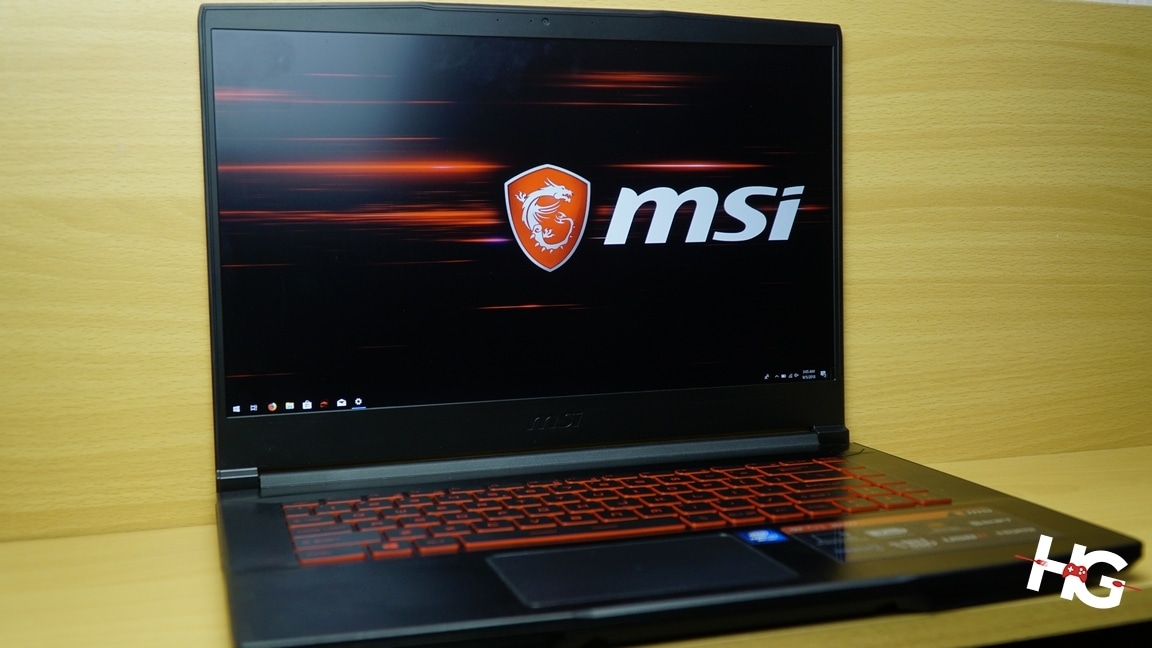
Like the aforementioned GS65, the MSI GF63 8RD comes in a sleek package with the top cover having a smooth aluminum finish with topped by the brand’s dragon logo. The notebook is also relatively lightweight compared to its bigger and bulkier predecessors at only 1.86kg. As with most of MSI’s gaming notebook, the laptop exudes a polished design that emulate exotic Italian sports cars.
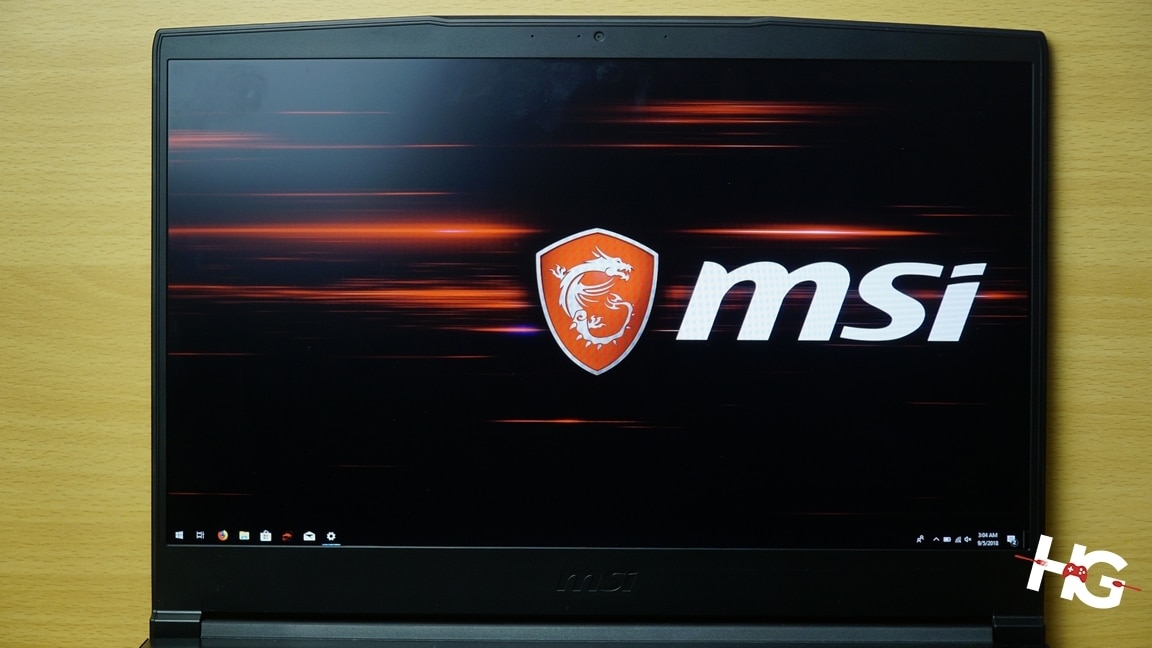
Nestled inside its thin side bezels is the MSI GF63 8RD’s 15.6-inch 1920 x 1080 IPS display. Running at only a refresh rate of 60Hz, the notebook’s screen is fairly average in terms of speed. To keep costs down, the panel does not come with NVIDIA GSYNC; an expected decision for a notebook at its price point. Color and viewing angles are also customary for an IPS panel with the screen having large viewing angles and decent colors without leaning to either warmer or cooler tones.
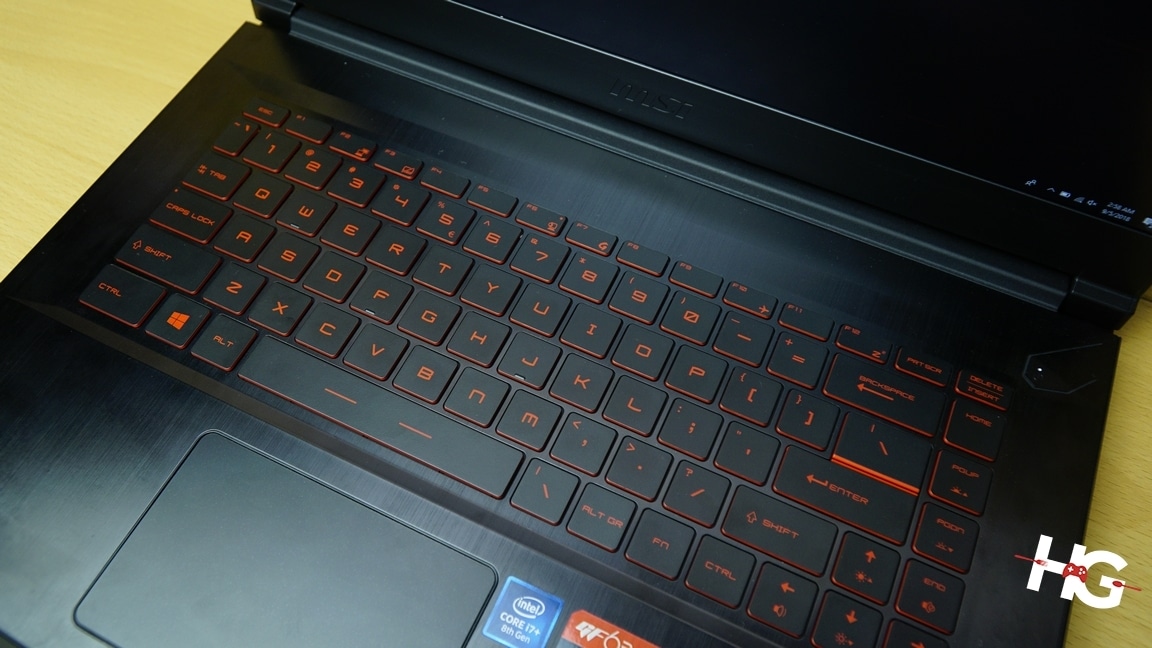
The keyboard on the MSI GF63 8RD is of a standard 60% layout with Chiclet keys. There’s no RGB lighting to be found here but the keyboard does have red backlight that can be adjusted in three different brightness settings by pressing Fn and page up (brightness up) or page down (brightness down).
The only challenge we have with the keyboard is it seems that MSI has cut a unit from the keycaps from the left-most keys, especially in Control, Left Shift, and Caps Lock. This is most noticeable when coming from other notebooks which have larger keys on the left-most keys. After a bit of time though, this problem will go by itself as the notebook’s user becomes more familiar with MSI’s keyboard layout.

The MSI GF63 8RD comes with a several ports that one would find useful in a gaming laptop. At the left-hand side is a single USB 3.1 Gen1 Type-A port beside the charging port.
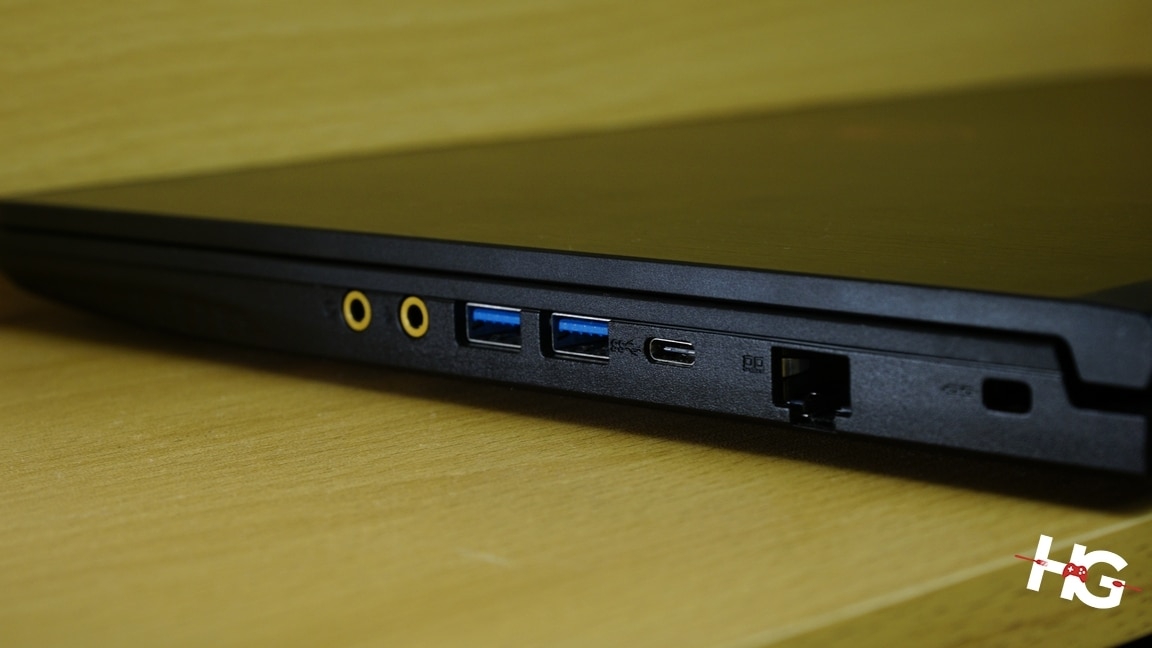
The other side houses separate gold-plated 3.5mm jacks for the microphone and headphone, two more USB 3.1 Gen1 Type-A ports, a single USB 3.1 Gen1 Type-C port, and a RJ-45 Ethernet port.
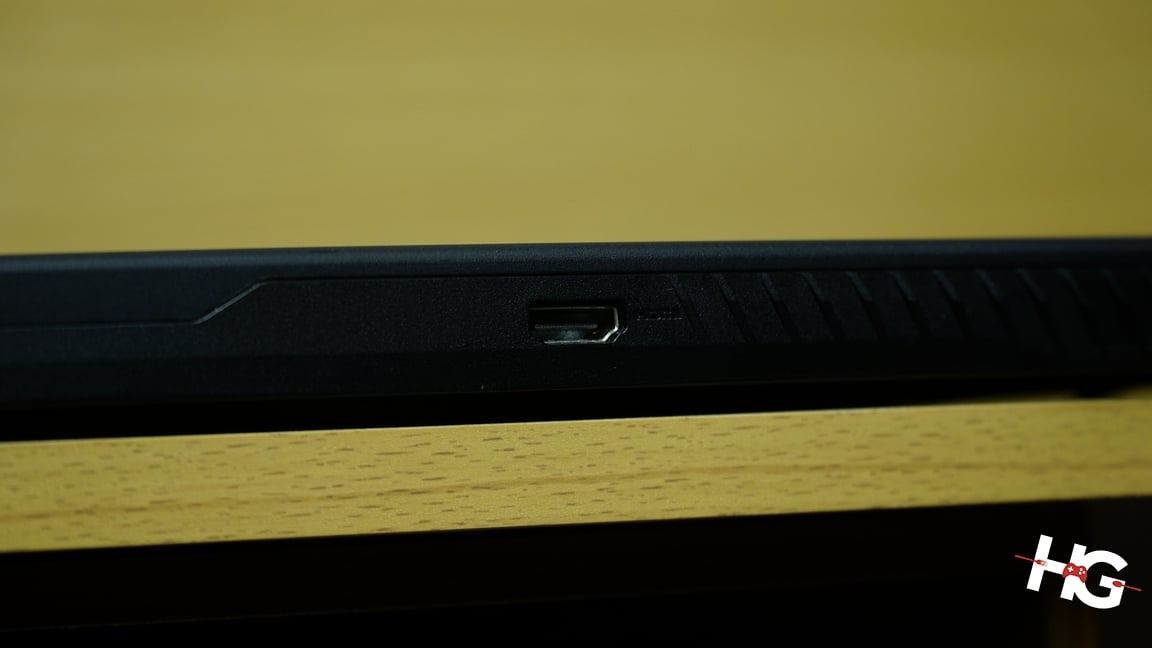
MSI has cleverly hidden the HDMI port on the back of the screen. This makes for a more hassle free experience since the cable would be out of the way of either sides of the notebook.
To provide performance, the MSI GF63 8RD is backed by Intel’s Coffee Lake platform. Depending on the configuration, the notebook can have up to an Intel Core i7 Coffee Lake processor, an NVIDIA GeForce GTX 1050 Ti MaxQ GPU, and up to 32GB of DDR4 RAM clocking at 2400MHz or 2666MHz. The notebook also has several options for storage. Storage can be decked with a single M.2 drive (SATA or NVMe) as well as a terabyte of HDD.
There are several key features missing on the MSI GF63 8RD that are found on some of its predecessors. The most noticeable of which is RGB lighting. MSI is heavily backing the RGB craze with most of their notebooks even partnering with SteelSeries for some of the software support on their notebooks.
Another missing trait from the notebook is a dedicated Turbo Boost button usually found near the power button of the notebook. This, however, has been alleviated by MSI by relegating the fan controls on the MSI Dragon Center 2.0, which we’ll discuss on the next section of this review.
Software
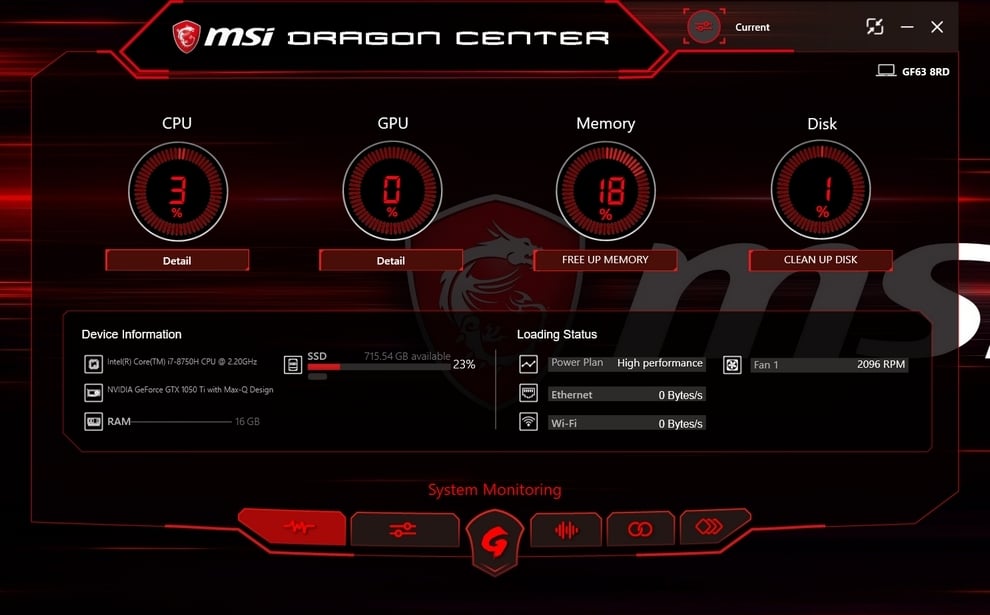
MSI have streamlined their software suite with the revamped MSI Dragon Center 2.0. The homepage of the new software shows most of the important details of the notebook such as the CPU, GPU, RAM, HDD, and Internet usage.

The System Tuner page of the MSI Dragon Center 2.0 allows its user to configure the display, battery performance, as well as the fan speed of the notebook. Users can also toggle the Windows key as well as switch the function and Windows key depending on the users’ preference.
MSI’s new software also allows Voice Over IP (VOIP) volume boosting, mobile monitoring with a smartphone, and tools such as image recovery and battery calibration.
Benchmarks
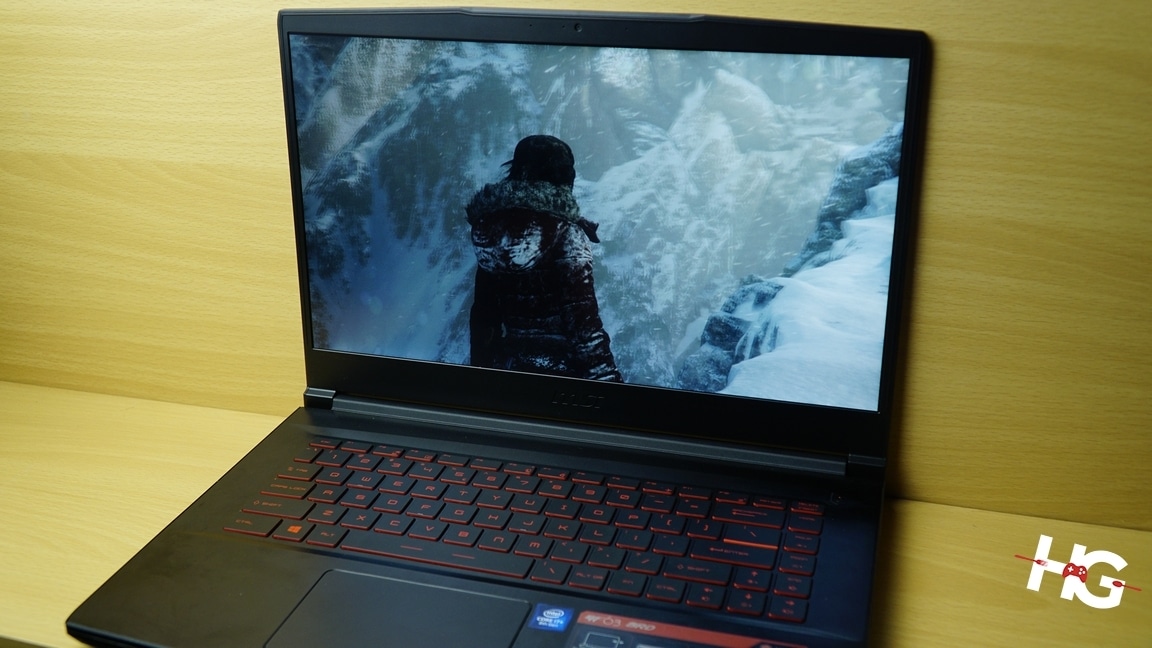
Inside the MSI GF63 8RD on the test unit that we have are:
Unfortunately, there’s no SSD on the model we have. This is noticeable when booting up to Windows as well as some heavy games. Storage, however, do not affect CPU and GPU performance when it comes to games. As usual, we tested the MSI GF63 8RD with several CPU-bound software and games. Games were run at 1920 x 1080 as it is the native resolution of the display.
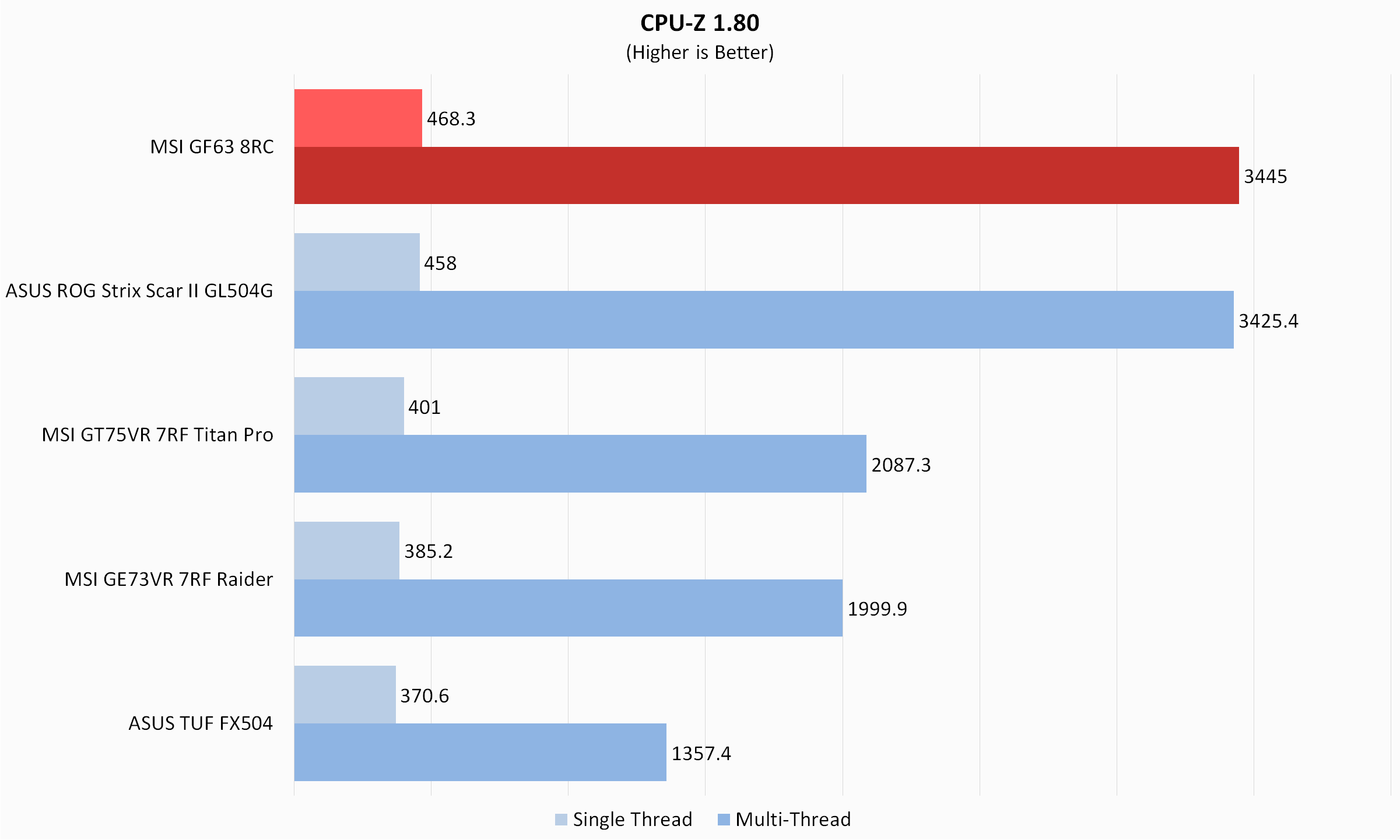


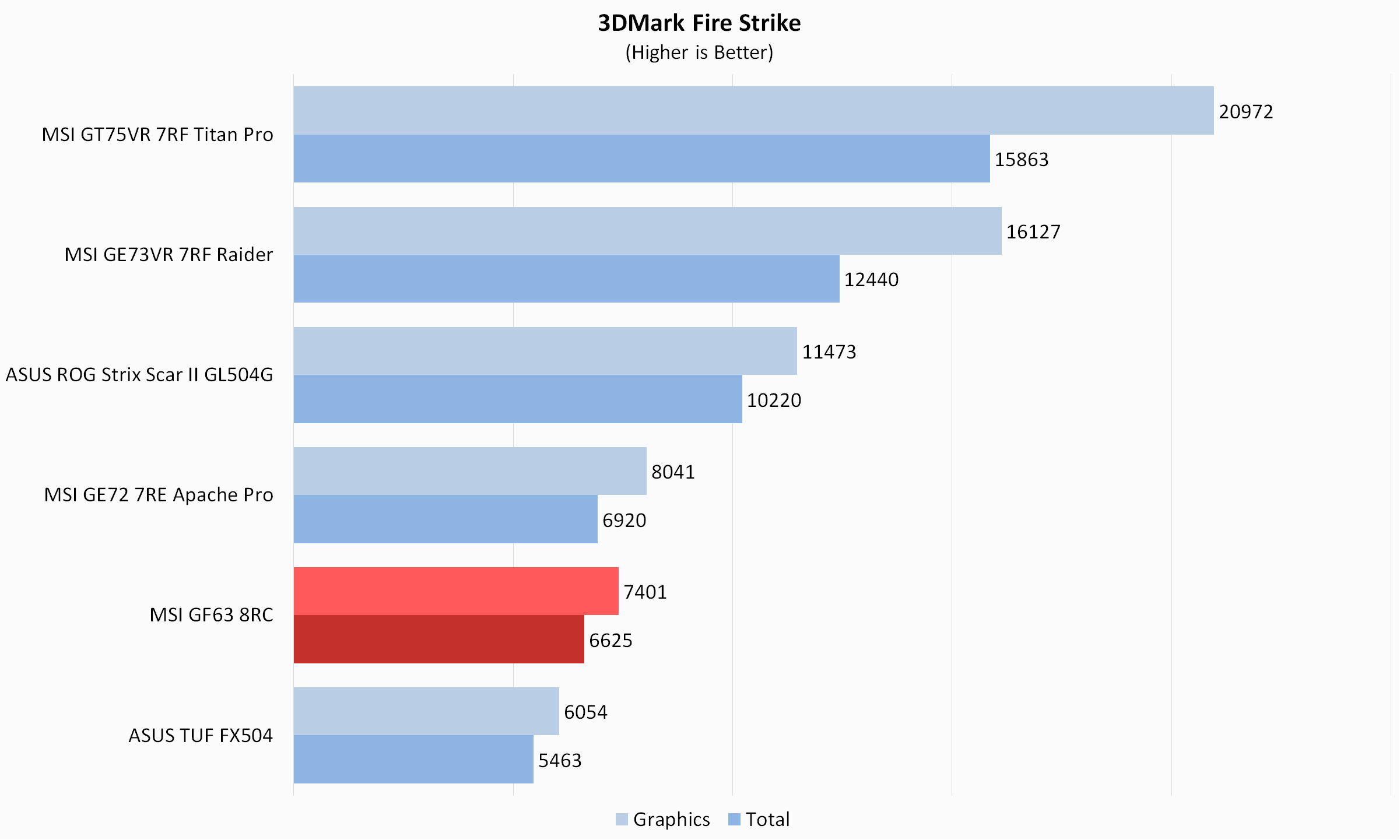
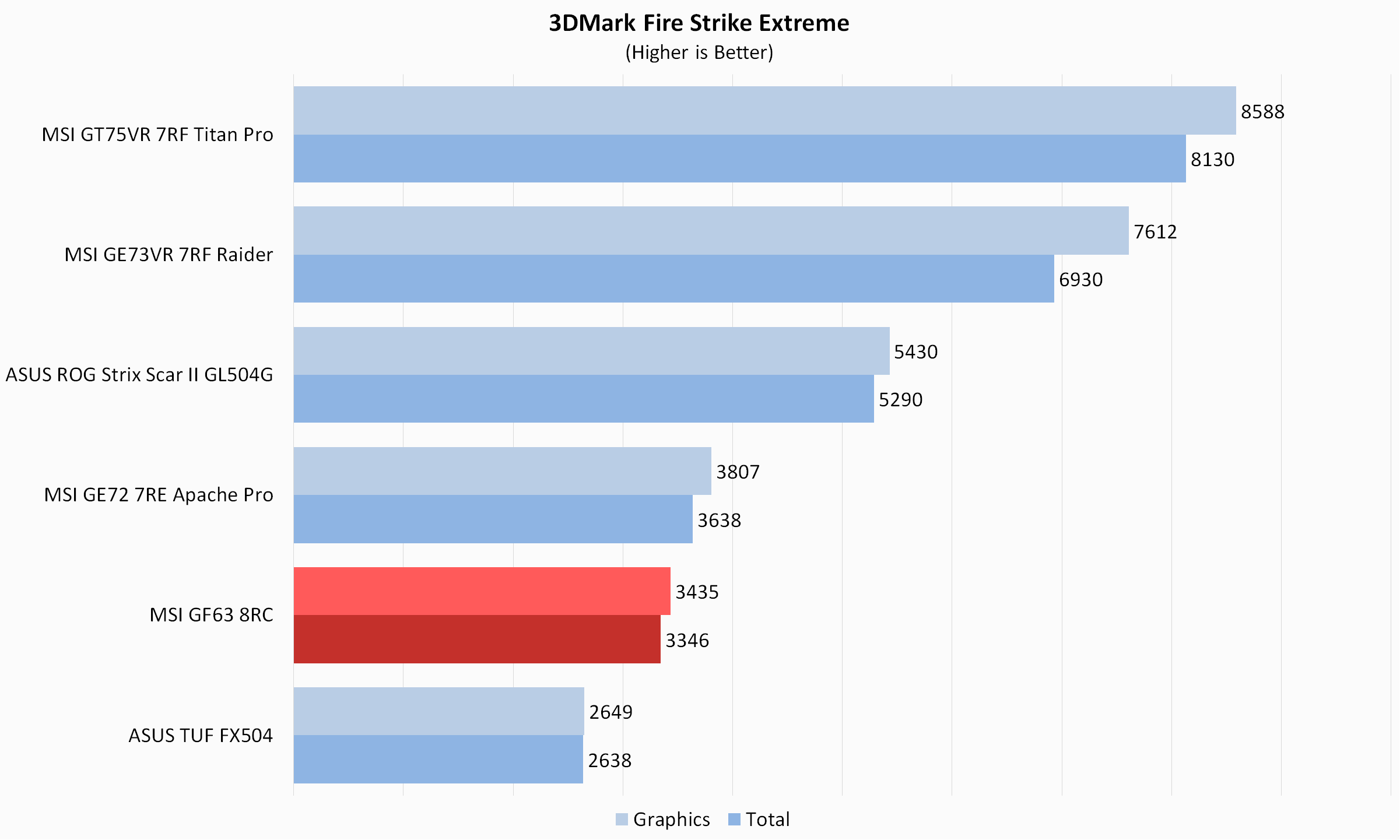

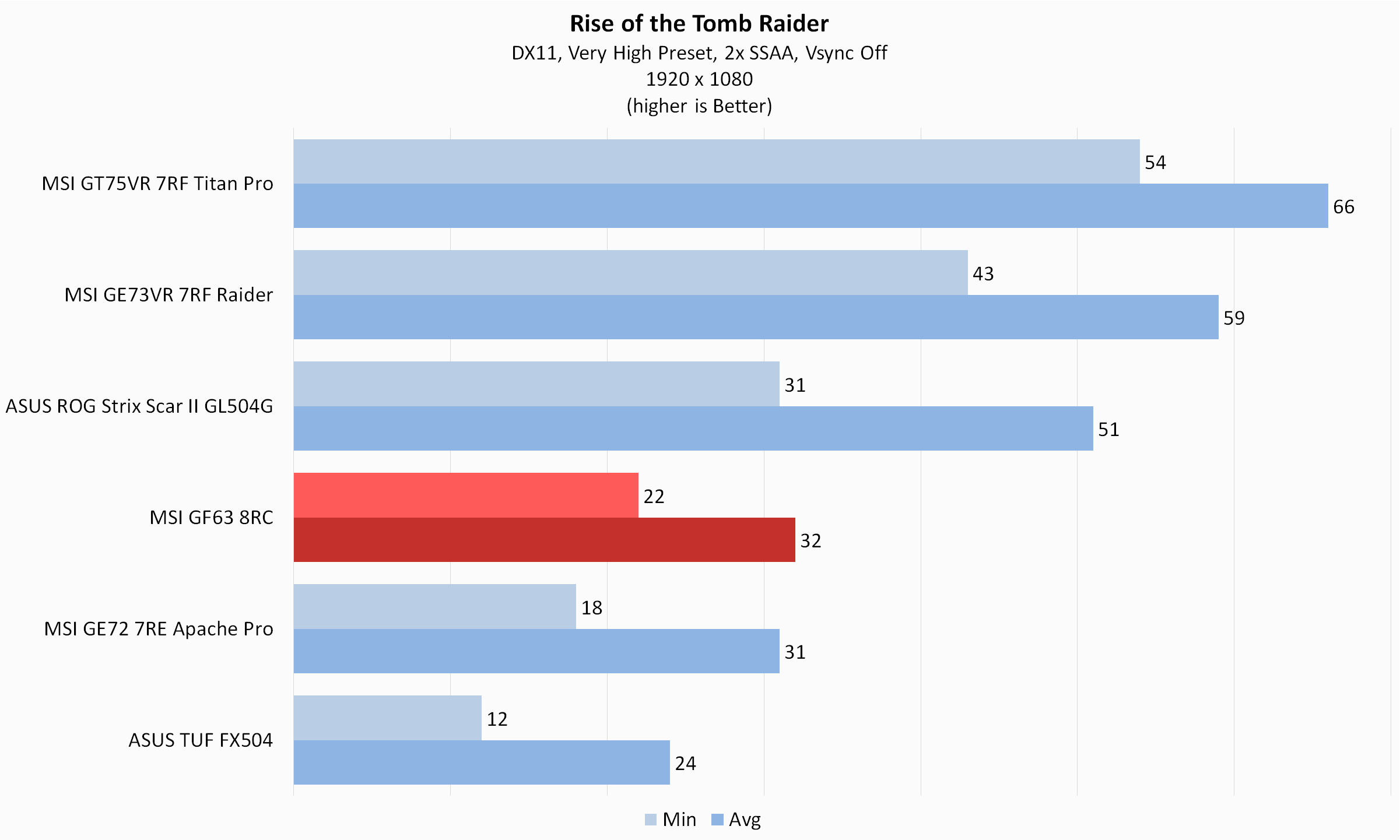

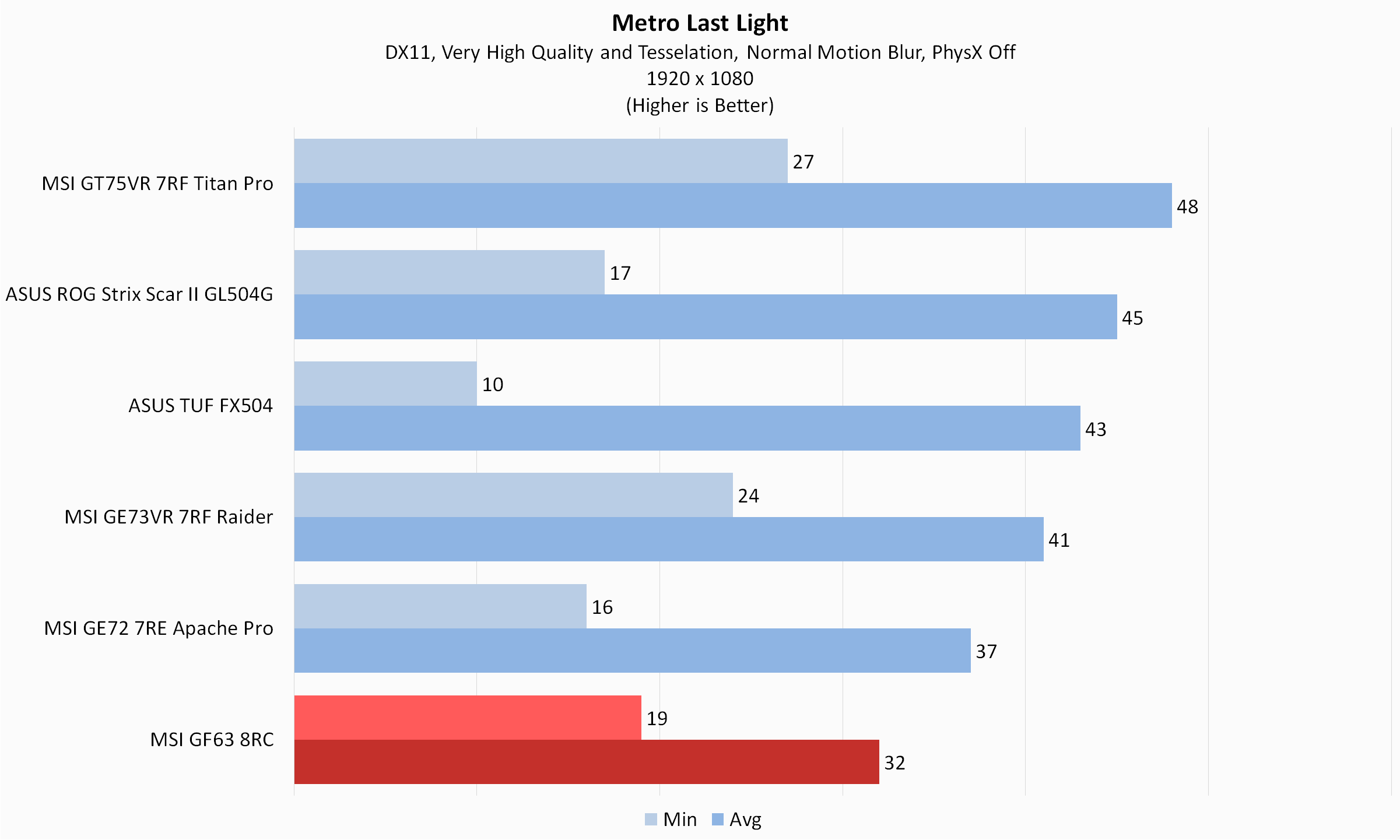
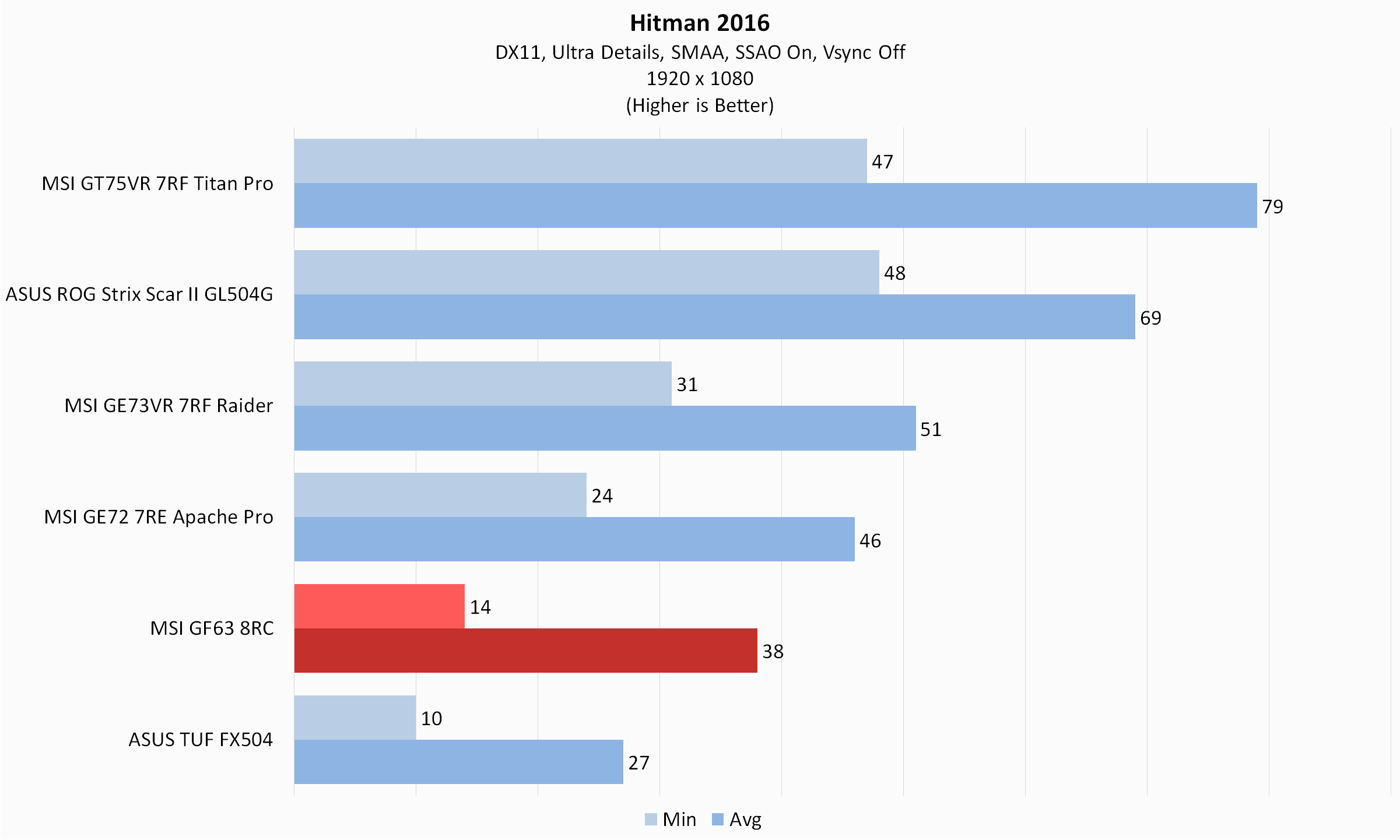
As expected from a notebook with an NVIDIA GeForce GTX 1050 Ti, some of the more demanding details in games such as anti-aliasing might need to be turned down a bit in order to gain playable frame rate. The MSI GF63 8RC might have some trouble running triple AAA games in their highest settings, but turn down some of the settings at around medium, and the notebook will produce decent FPS numbers.
Battery Life
Powering the MSI GF63 8RD while on the go is a 3-cell 51Whr Li-Polymer battery that’s charged by a 120W adapter. Under light usage, the notebook should last around 7 hours with the backlight of the keyboard turned off and the brightness of display turned way down.
Gaming while on-the-go, however, the MSI GF63 8RD will only last around an hour and a half of usage. Once the battery is depleted, there is going to be a 2 hour wait to top up the battery.
Conclusion
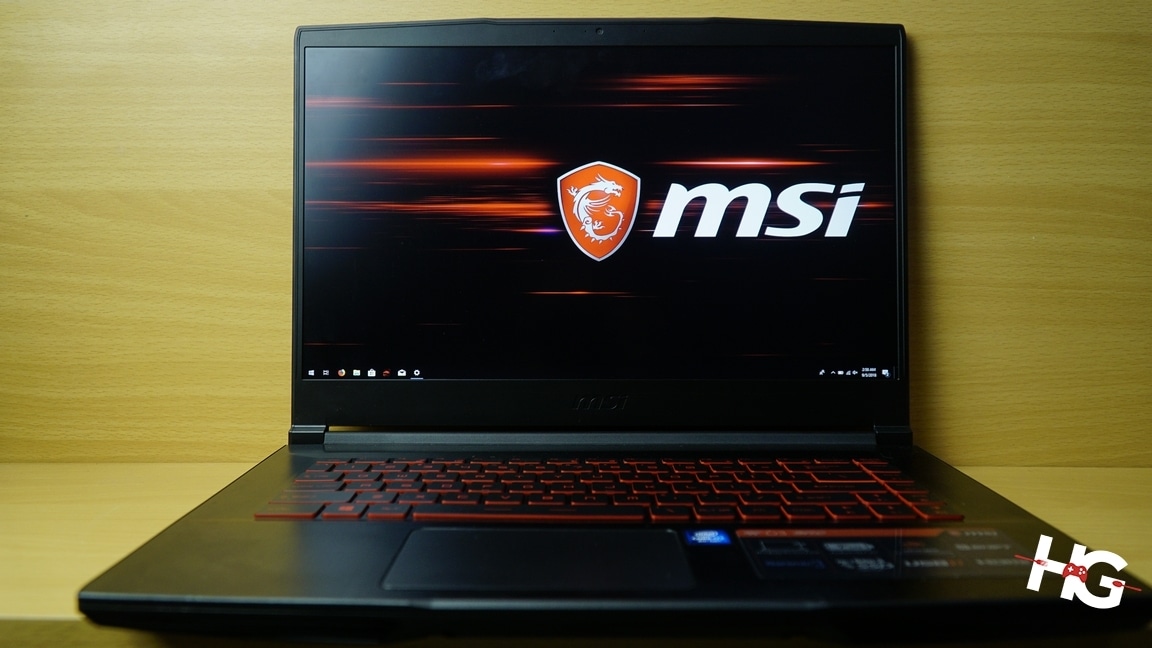
With a starting price of USD 1,099 or PhP 59,995 locally, the MSI GF63 8RD gets a lot or right when it comes to its primary goal: giving its audience a decent gaming experience without breaking their backs.
First off, the notebook is surprisingly light for what’s inside. Performance is top notch despite not having the same cooling system as its contemporaries. While the display is pretty average for a notebook, it still delivers crisp visuals and decent color reproduction.
As far as negative go, the keyboard might have a bit of learning curve especially with MSI cutting off a portion of the left-most side keys. Some of the storage options might also have a premium since the starting model of the MSI GF63 8RD at PhP 59,995 only comes with a 1TB drive. The sole model that comes with an SSD for the MSI GF63 8RD is priced at PhP 79,995. Hopefully, future models of the GF63 series can come with at least a SATA SSD.
Despite some of its faults, the MSI GF63 8RD delivers an overall reasonable performance in the areas that it matters: gaming. It might not be able reach the highest frame rates in triple AAA games but in more mainstream titles such as DotA II, Overwatch, and Counter Strike: Global Offensive, the notebook will surely deliver top notch performance.
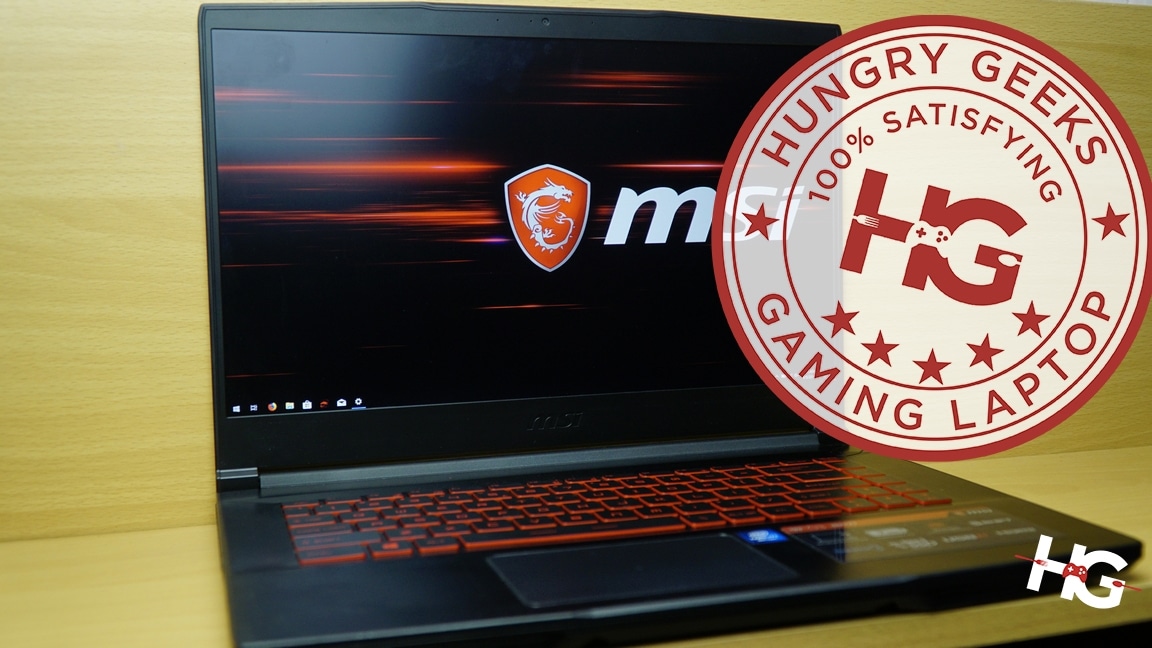
Since the notebook also carries Intel’s Coffee Lake processor, the MSI GF63 8RD can also perform double duty as a workstation notebook or a mobile editing station. It’s with these reasons that we will be giving the MSI GF63 8RD our 100% Satisfying Gaming Notebook award. If you don’t want to break your back lugging around a massive titan to get a satisfactory gaming experience, then the MSI GF63 8RD can be a lightweight alternative.
